1st step to Great Performance!
Every Tuner should be able measure base flatness. It isn't hard to do. Actual flattening is harder, but can be done quickly with the right tools and techniques. Even if you have a shop do all your new ski prep, you should at LEAST be able to measure the product the shops are providing, and to monitor the ski as it wears.
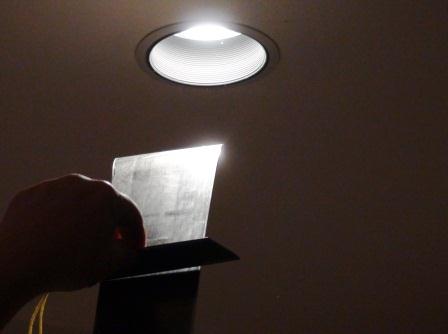
I am holding 1 edge up for illustration purposes, but this is what you should see: a shadow with a little light creeping through.
To measure flatness using a true bar and light (the most common method), Hold the ski such that it is pointing DIRECTLY at a light source (but not the sun). Put the true bar onto the ski between the light source and your eye. Note where the light is coming through. These are the "low spots." The bar is riding on the "high spots." If there is NO light coming through, that indicates 1 of 2 possibilities: 1.) The ski is perfectly flat OR 2.) you aren't hold the ski at the right angle to the light. #2 is usually the right answer.
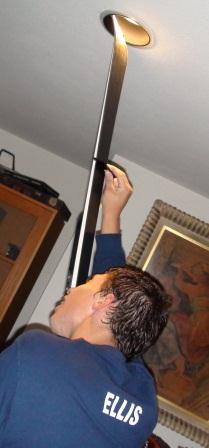
Here Ty is showing:
Light -> Bar -> Eye. You MUST be inline with the light source.
A FLAT base is one of
the most important steps in extracting top performance from a ski, AND in helping a good skier develop "touch" and/or "snow feel." Why? Because if the base is NOT flat, the ski cannot behave the way the designers of the ski intended. As a skier, if the skis won't perform properly, the skier will naturally "compensate." This means extra movements/stances that are not helping the skier ski well.
This means that
EVERY racer from the
youngest novice to the most advanced should have a PERFECTLY flat ski. Especially the youngest- so that they can learn properly right from the start (no bad habits).
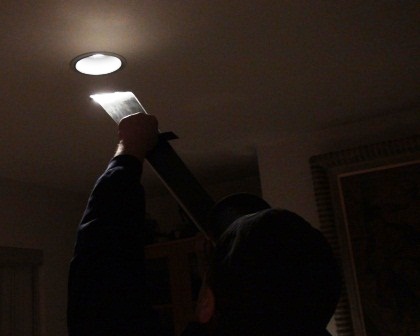
The amount of light coming through SHOULD BE VERY little. So how you hold the bar and ski in relation to the light source is critical.
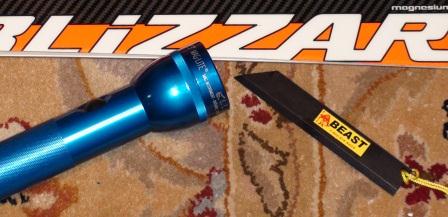
All you need to check flatness: Light and a True bar
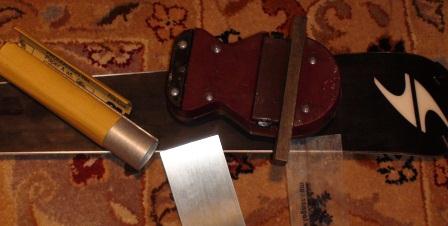
To flatten, you need sandpaper and a sharp scraper. Above I have a
Ray's Way Flattening Tube and
Ski Visions Planer with carbide bar. This is my preferred combination.
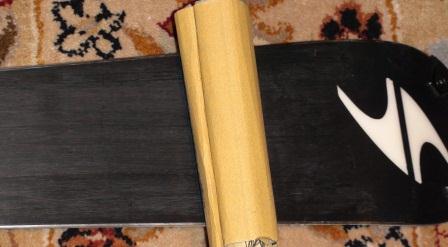
Start but lowering the high spots with sandpaper. The Ray's Way roll increases pressure to make the job faster. Sand to loosen the material then...
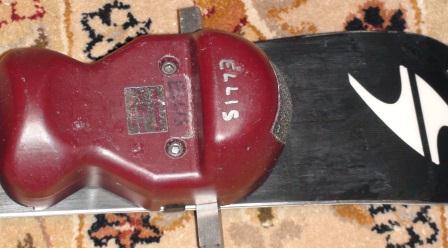
Scrape away the loose plastic with the planner. Go back and forth between the two tools until flat. Recheck with the True Bar between each cycle.
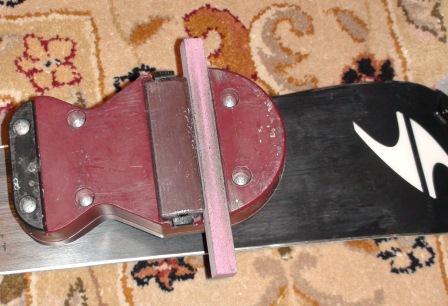
Put one of the structuring stones in the planer to finish the job.
Modern race skis have a MUCH better factory finish than they used to. Generally, new skis come relatively flat- especially the top FIS models. But at least 90% of new skis that I look at need flattening before they hit the snow- IF you want them to ski as designed. Tips and tails are the most critical.
I have run at least 100 experiments with ski flatness over the years, and I am still always amazed how big a difference removing .001 to .002 of material can make to ski performance. Many skis are concave by .005 to .010. They are no fun to ski on at all- once you have experienced a GREAT tune. Put in the time to get your skis flat and it will pay you back on the hill!
BTW: There are a FEW tuners who advocate concave skis for racers. I have skied on the products and don't enjoy them at all. While it is TRUE that those skis have a natural propensity to carve, it is also true that the skis ONLY want to carve. On injected ice, the skis may be useful and powerful. Everywhere else, they limit the racer's ability to adjust line. Especially in the NW, FLAT is FAST!
 by John Ellis, U14/16/FIS Coach, Gear
by John Ellis, U14/16/FIS Coach, Gear  by John Ellis, U14/16/FIS Coach, Gear
by John Ellis, U14/16/FIS Coach, Gear